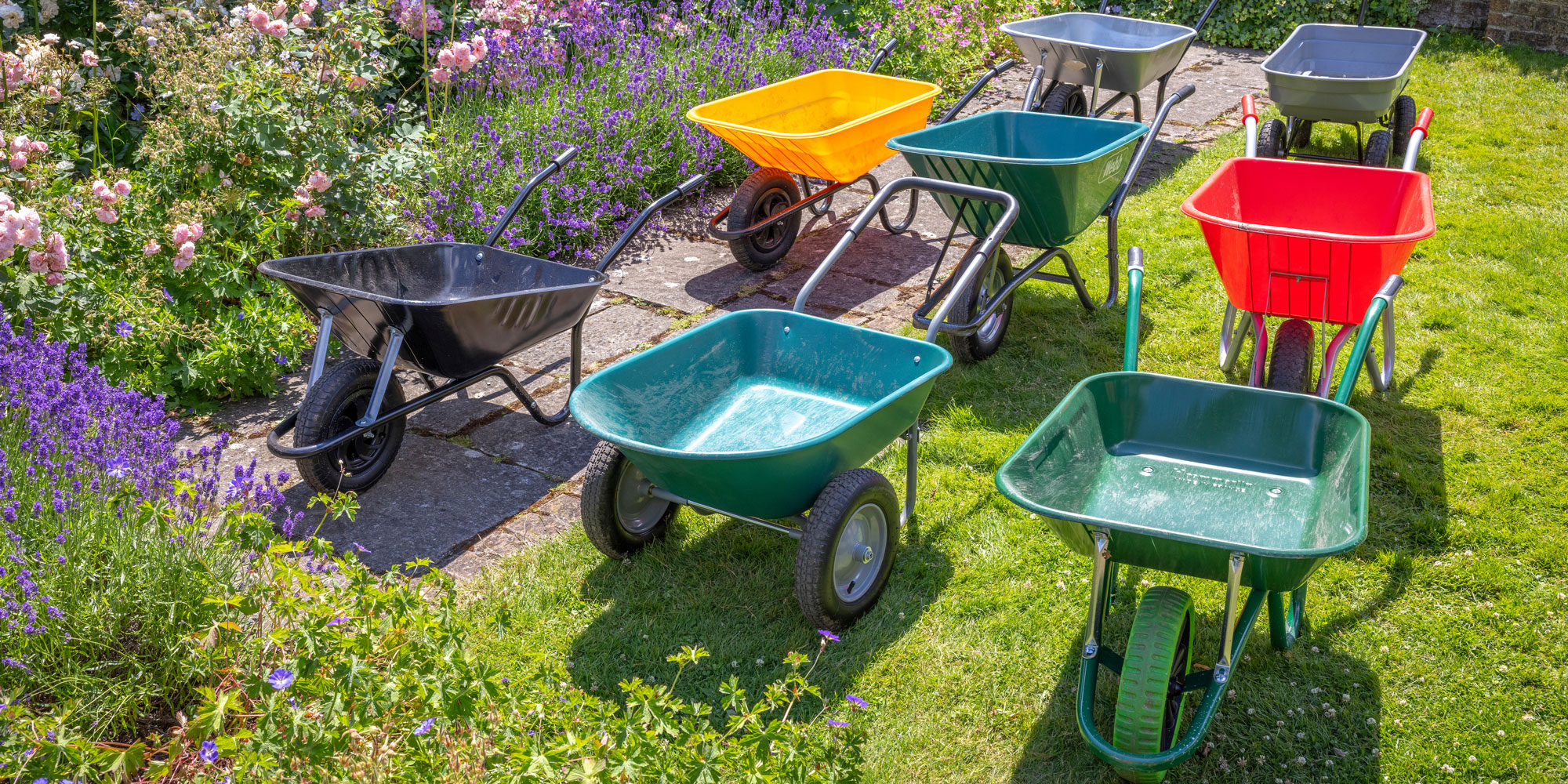
Get a year of super-useful advice
Make your garden better than ever! Get year-round expert tests and advice for only £36.75 - that’s 25% off!
Join Which? GardeningOffer ends 8 January 2026
By clicking a retailer link you consent to third-party cookies that track your onward journey. This enables W? to receive an affiliate commission if you make a purchase, which supports our mission to be the UK's consumer champion.

The best wheelbarrows can make light work of moving heavy materials, while the worst will be unstable, hard to manoeuvre and leave you with sore arms.
Use our expert advice to help you decide on the most suitable type, the features you should look out for and how much you need to pay.
Only logged-in Which? members can view the wheelbarrows test results below. Join Which? now to get instant access to our test scores and Best Buy recommendations below.
| Product | Capacity | Number of wheels | Overall score | Ease of assembly | Ease of tipping | Comfort of handles | Height and width of handles | Stability of contents |
|---|---|---|---|---|---|---|---|---|
| B&Q Sovereign Orange Metal & Polypropylene Wheelbarrow | Sign up to reveal Get instant access to this and all our scores and recommendations Unlock tableDigital £8.99 per month, cancel any time. Already a member? Log in | |||||||
| Costway 2 Tire wheelbarrow | ||||||||
| Crytec Commercial Grade Wheelbarrow | ||||||||
| Haemmerlin Trade Chillington Chasseur Galvanised Wheelbarrow | ||||||||
| Haemmerlin Trade Green Wheelbarrow | ||||||||
| Oypla Heavy Duty Two Wheeled Garden Wheelbarrow | ||||||||
| Q Garden Poly Garden Dump Cart | ||||||||
Sign up to reveal
Get instant access to this and all our scores and recommendations
Unlock tableDigital £8.99 per month, cancel any time.
Already a member? Log in
USING THE TABLE The more stars the better. BB/RC = Best Buy/Recommended. Air = pneumatic tyres, PP = puncture-proof tyres. n/a indicates models that are carts and can’t be spot-tipped. OVERALL SCORE Ignores price; based on: ease of pushing 25%; ease of spot-tipping 20%; height and width of handles 20%; comfort of hand grips 15%; ease of assembly 10%; stability of contents 10%.

This is the traditional type of wheelbarrow. Designed for manoeuvrability, they’re perfect for moving light garden debris across short distances.
However, they aren’t always the most stable and you’ll need upper-arm strength to keep heavy loads from tipping to one side.
This type of wheelbarrow is better suited for lifting more cumbersome loads. The two wheels ensure a lot more stability also make it quite tricky to turn tight corners and negotiate small spaces.
A wheelbarrow with four wheels is technically a garden cart. These are worth considering if you want to be able to drag heavy loads behind you easily. They're more stable than a wheelbarrow but can be tricky to turn.
They're typically bigger than most wheelbarrows, so you’d also need to make sure you have enough room in your garden, garage or shed for a cart.
In need of a garden shed? See our guide on how to buy the best shed.

Make your garden better than ever! Get year-round expert tests and advice for only £36.75 - that’s 25% off!
Join Which? GardeningOffer ends 8 January 2026
Choosing between a plastic or metal wheelbarrow will ultimately come down to what you’re using it for and how much weight you can handle.
You can also buy fabric wheelbarrows that can be folded. These are great if you’re short of storage space, but they aren't able to handle heavy loads.
If you have big chunks of garden wood that are hard to move - even with a wheelbarrow - try using one of our best chainsaws to reduce the material into manageable loads.
These tyres can be made with an internal tube that is filled with air – just like a bike – or can be tubeless. The air in both types acts like a cushion, making bumpy terrain feel a lot smoother. These tyres are prone to puncturing, though, and will also need pumping up frequently.
These solid rubber tyres have no air tube inside and can't go flat. They don’t need to be pumped up, but without the air inside it will be a slightly bumpier ride.
The cheapest wheelbarrows are typically plastic with shallow tubs – you can get one for as little as £30. But be careful, as buying one that's any cheaper could become a false economy.
If you’re just doing light gardening work and you have a garage to store the wheelbarrow, a budget plastic model should suffice.
But for avid gardeners or those of you who’ll be using it on a building site, paying more for a durable steel model is worthwhile. These typically cost around £60-£80 for basic features, but can go all the way up to £200.
If it's just leaves you need to move from your garden, why not take a look at one of our best leaf blower vacuums instead?
Both generalist retailers and dedicated garden shops offer a wide range of wheelbarrows. To make sure you're buying a wheelbarrow that's well built and safe to use, only shop with trusted sellers online or in-store.
Ideally, you'd get to see the wheelbarrow in-store before buying, but if this isn’t possible, find out as much information about it as possible before investing.
For more details on shopping online safely and arranging refunds for faulty equipment, see our online shopping advice.
Popular shops that sell wheelbarrows include:
If you want a wheelbarrow for lightweight tasks, such as moving plants and garden debris, then you won't need a model with lots of features. But for anything more, the following additions could prove invaluable:
Garden accessory reviews: see our independent reviews and buying advice for everything from barbecues to compost.
Once you've cleared all the debris from your garden, give the decking or patio a clean using one of our best pressure washers.